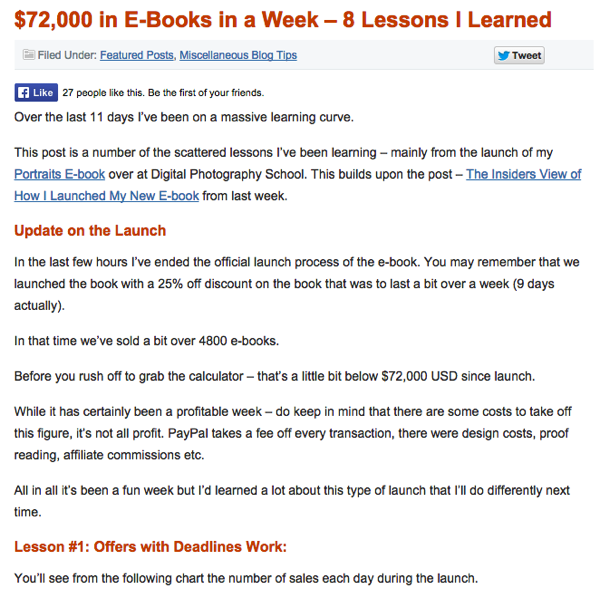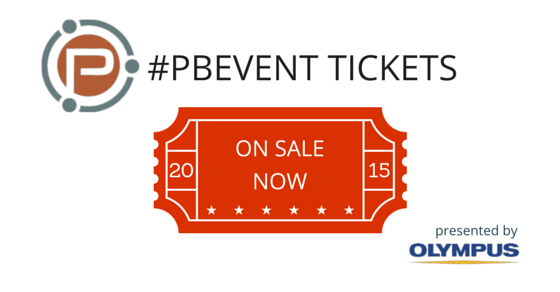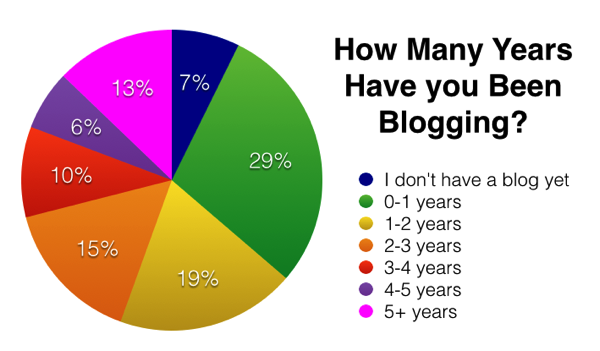ProBlogger: Editing for People Who Love to Write… Too Much |  |
| Editing for People Who Love to Write… Too Much Posted: 29 Mar 2015 07:22 AM PDT If you’re anything like me, you love words. You love prose, you love language, you love how a perfectly-constructed sentence can say so much more than just letters put in order. If you’re unlike me, however, you love to use lots of words, and write mountains of prose. I know it’s hard not to get carried away, telling everyone everything you’ve ever wanted to say about a subject. Especially online, when blogs are creative outlets, and there are no restraints or word counts. But having been on the reading end of waffly posts (particularly when I haven’t got too much time to spare), I’ve realised the old adage “less is more” really does ring true. Does that mean you can’t write long-form posts because they bore readers? No! It means write them well. Make each of those 2000+ words count. But how do you self-edit when you feel as though every word is important? I’m so glad you asked! Let’s find out: Tips for Self-EditingFollow Stephen King’s Number-One TipI wrote about his method of editing here, but it’s basically getting some space between you and your work. Stephen King puts his work (literally) in a drawer, and comes back a couple of months later to edit and tweak. You can come back sooner than that, but fresh eyes and a clear head make a world of difference when it comes to editing. Still unconvinced? You won’t be after you read the post! You really can’t edit while you write, go straight from writing to editing, or edit the same day. Give it some time. Can you say it in fewer words?Twitter is great training for this (thanks to its 140-character limit), as was being a journalist – cutting unnecessary words makes for cleaner copy, there’s just no way around it. I’ll bet there are plenty of sentences you can streamline to pack a powerful punch in less letters. Read it AloudYou’ll be surprised how much your writing can sound perfectly fine in your head, but be totally disjointed when you read it aloud. You’ll notice those times when your sentences run on, where you might need a comma, or where you’ve repeated a word too often. Print it OutReading on a screen, no matter how many times you’ve done it or how comfortable you are with it, is still so different to reading words in print. Your accuracy in identifying errors is far greater when you have a hard copy to refer to, especially when it comes to finding visually similar mistakes. If you’re working on something that has to have the highest degree of accuracy, print it out, grab a pencil or a highlighter, and get to work. Look for the Most ObviousIn your first read-over, search for the glaring errors – the typos, the spelling errors, that one time where you got your their/there mixed up, the visual formatting (how did that sentence get down there?), and any time you’ve written in passive voice. Pay special attention to apostrophes – most of the time they don’t need to be there. If it’s a possession or a contraction, fine, but keep them out of where they don’t belong. Further Reading: Five Quick Grammar Tips to Improve Your Writing (Plus Free Downloadable Cheat Sheet) Turn it AroundYou’ll be surprised how much clearer a sentence can be if you flip it. Especially if you have that gut feeling that it’s too long or there’s something not quite right about it. Passive sentences can really disrupt your flow.
Sounds so much better (and uses less words and has more of an effect on the reader) if it’s written:
There now, you’ve turned a passive sentence into a punchy, active one, losing extraneous words in the process. Well done! Done is Better than PerfectYou could spend days tweaking your posts. You add, you take away, you add back, you switch around, you make eight versions of the headline in case one works better. Sometimes you end up going around in circles because you’re so into it now you can’t see straight, and your perspective is all off. You just have to put your foot down and publish! As a journalist, we had a ready-made cutoff – it didn’t matter how much you had fiddled with your story, at some point it had to go to the printer, like it or not. Set yourself a cutoff, and remember – blogging gives you the gift of updating your post after publication if you really feel it needs it. If you’ve followed Point One, I can almost guarantee you’ll find something! Try it… You’ll Like itIf you’re unsure about a paragraph (or even a sentence), open a new document. Cut and paste all those “maybe” paragraphs into the document, and read your original post in its shortened form. Still think it could do with those words? Add them back in, no harm done. (Are you SURE, though?!) Fact CheckIt’s all very well and good to write something to convince people of your message, but you need stats to back it up. Ensure that all the numbers, anecdotes, and information you’ve included can be verified. Make sure there’s links to further information to help the reader understand your post, and to see the proof for themselves. One top tip I learned is that if you’ve got questions, your reader will too. Wherever have made a bold claim, link to where you got your information. If you think that someone reading your post would benefit from your primary sources, then include them. Harden UpI know your work is precious. You’ve put a lot of effort into it. Your blog post is the culmination of hours of research, years of learning, numerous mistakes. You have a lot to say, and you think all of it is necessary. It’s probably not. There might be a place where you’ve repeated yourself. You might be able to make your point just as validly, but in fewer words. Some anecdotes, while funny, just won’t fit. Harden up and get rid of the bits that just aren’t working. There’s nothing stopping you from using that information in a future post, but your job here is to look at your work with a critical eye and make it the best it can be. How would you edit this if it was someone else’s work? What bits would you cut out in order to make your story better? Do that. You won’t regret it.
So tell me – do you find editing hard? Or are you constantly looking over everything you read with your editor hat on? (that can be just as bad – it’s harder to get lost in a story when you’re always getting tripped up by writing errors). What’s your best tip for self-editing? Stacey is the Managing Editor of ProBlogger.net: a writer, blogger, and full-time word nerd balancing it all with being a stay-at-home mum. She writes about all this and more at Veggie Mama. Chat with her on Twitter @veggie_mama or be entertained on Facebook.
Helpful Links9 Crucial Tips for Self-Editing Your Blog Posts How to Use Google in the Most Unusual Way to Make Your Self-Editing Faster and Better How You Can Make Your Writing Twice as Fast by Making it 3 Times More Time Consuming. Wait, What? Hemingway App highlights common errors, long sentences, and grammatical issues that need attention. It also helpfully colour-codes the changes to be made. If you write a lot, you might find this useful. Grammarly has pretty hardcore algorithms to not only find spelling mistakes, but contextual spelling errors too. Originally at: Blog Tips at ProBlogger |
| You are subscribed to email updates from @ProBlogger To stop receiving these emails, you may unsubscribe now. | Email delivery powered by Google |
| Google Inc., 1600 Amphitheatre Parkway, Mountain View, CA 94043, United States | |



























.jpg)